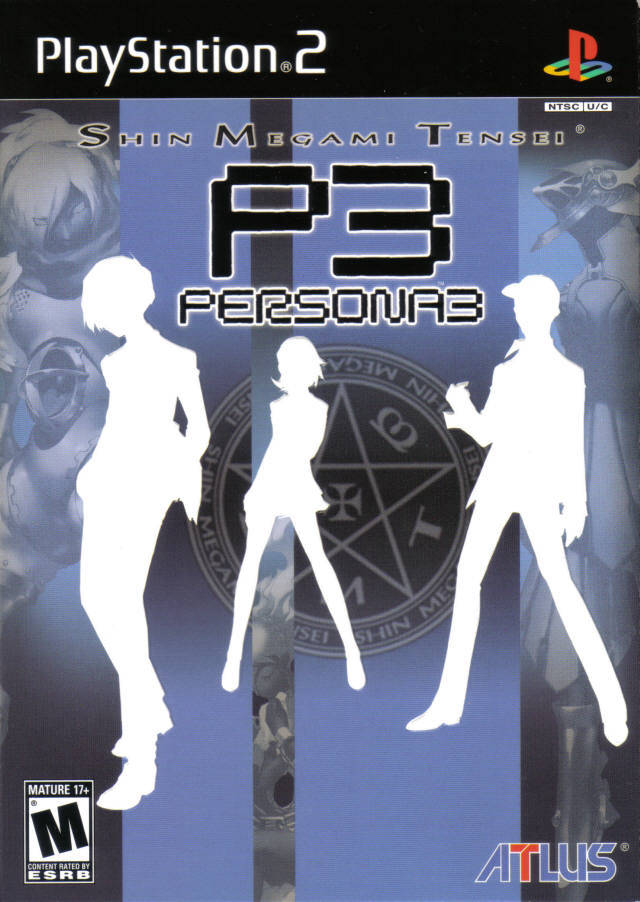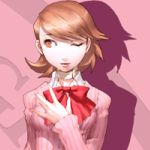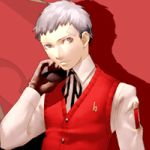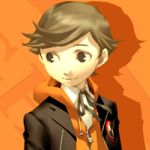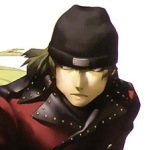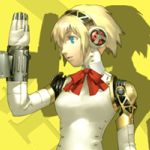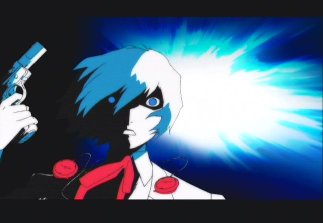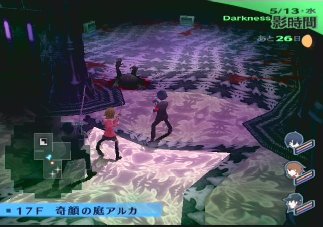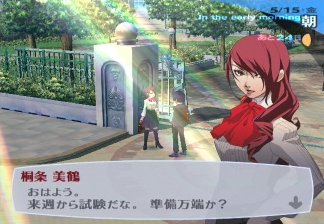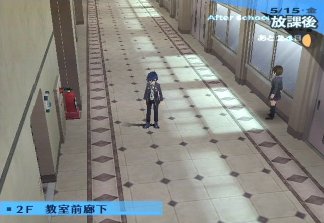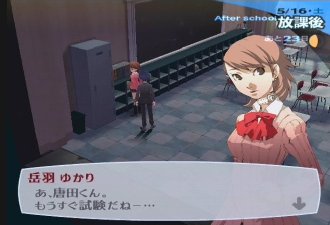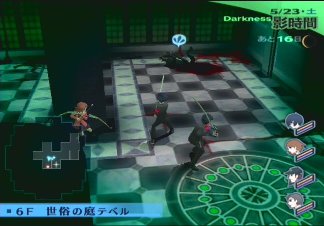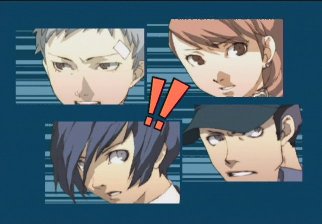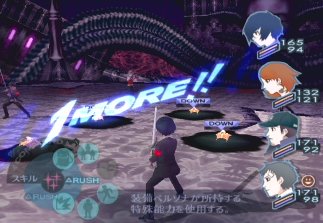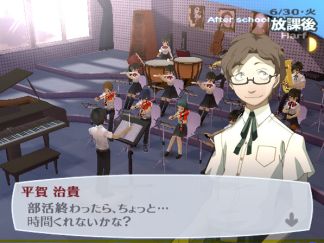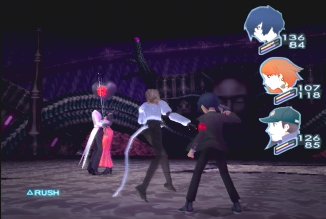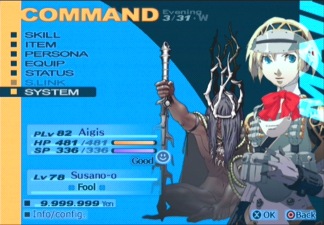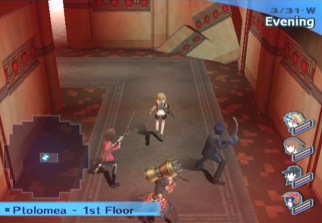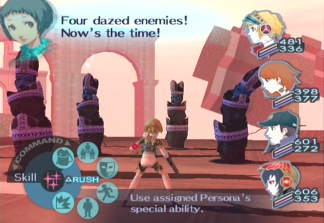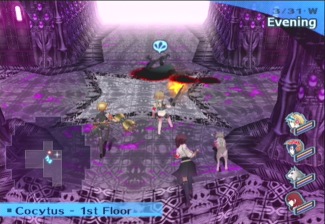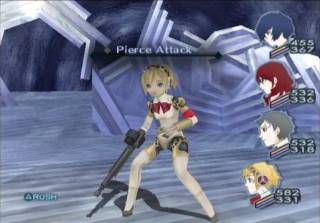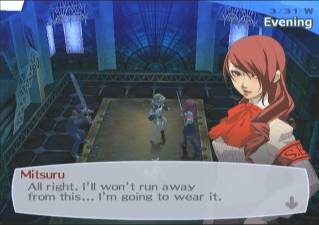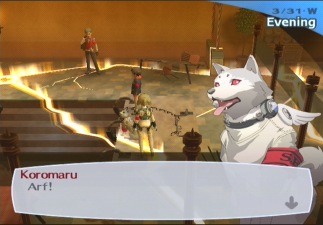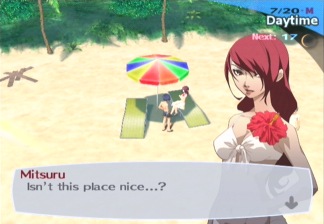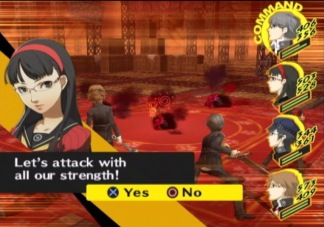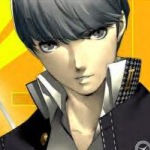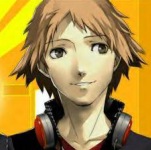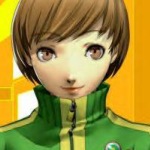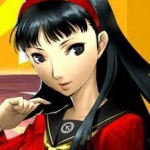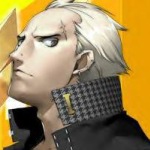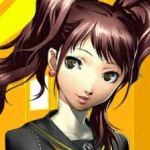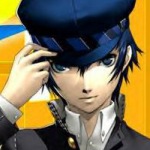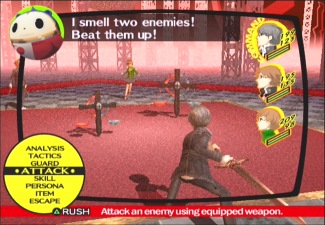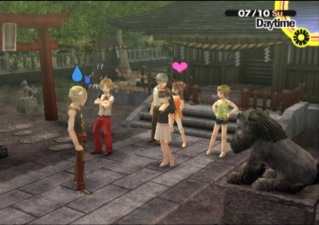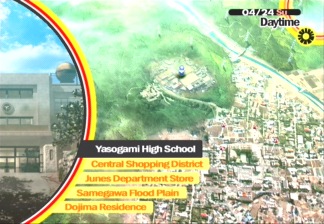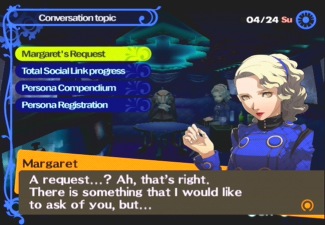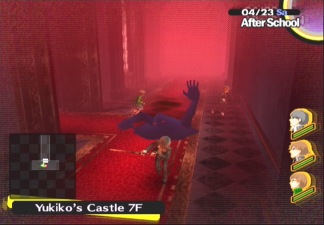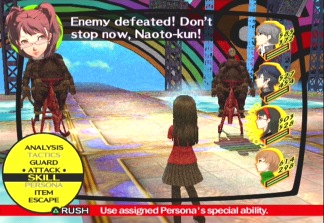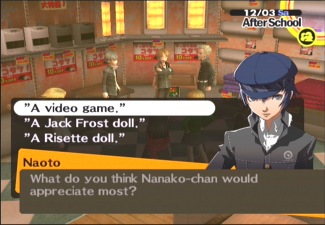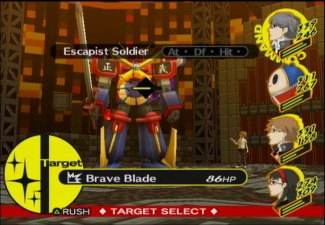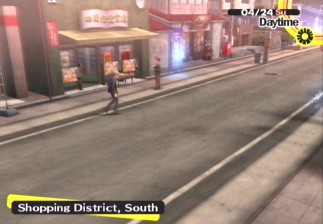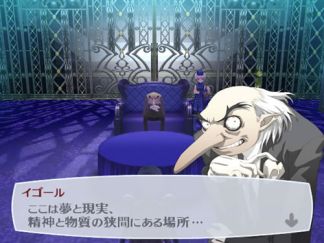
Persona
|
Next Page >>> |
|
Page 1: |
Page 2: |
Page 3: |
|
|
Persona 3 is a drastic departure from the rest of the Megami Tensei series. Although it still focuses on demon-fighting high schoolers in modern day Japan, the game is a hybrid of a dungeon crawling RPG (think Diablo) and a life/dating sim.
Every night at midnight, time stops, and a mysterious phenomenon known as the "Dark Hour" occurs. During this time, strange things begin happening around town, including the appearance of a mysterious tower called Tartarus that erupts from beneath the school. The only humans conscious of this event are a group of students who fight through the tower and try to prevent the end of the world. Naturally, you're one of those kids.
Quick Info:
|
Developer: |
|
|
Publisher: |
|
|
Genre: |
|
|
Themes: |
Persona 3 (PlayStation 2)
Characters
Hero
Yes, this frail, stylish boy with the emo haircut is you. As a transfer student, you end up staying in a dorm with the rest of SEES, the students who have joined together to save the world.
Yukari Takeba
One of your other classmates that joins up at the start of the game. She wields a bow and arrow.
Mitsuru Kirijo
Mitsuru is a cold, cold girl. At first, she simply acts as a navigator, but she eventually gets her hands dirty in combat.
Ken Amada
Ken is pretty young compared to the rest of the Persona users. Despite being in middle school, he can wield a mean spear.
Fuuka Yamagishi
A frail girl who gets bullied around, and eventually joins as a support characters when you rescue her.
During the day, you attend class, talk to fellow students, join various clubs and explore the city. In these segments, you build up various statistics, including Intelligence, Charisma, and Courage. You also need to be well-rested. Want to get in a few extra winks? Just take a nap during class, which will sacrifice intelligence but will get you rested for combat. Want to spend the day singing karaoke, or watching a movie, or chilling at a ramen cafe'? Go right ahead. Your statistics then influence the people that you meet and befriend. This is important, because these relationships, dubbed "Social Links", affect the strength of your Persona.
At night time, you can elect to enter Tartarus and do some demon slaying. Each level of the school is a randomly generated maze, with the only goal being to get treasure and find the exit. There are occasional boss fights, to mix things up, although you can only travel so far before getting tired. Thankfully, there are transporters every few flights, so you can easily resume progress is you need to call it quits for the night.
All enemies are visible on the playing field, and if you can whack them with your sword, you'll get an edge in combat. The game uses a variation of the Press Turn system found in SMT Nocturne and Digital Devil Saga, although you can only control your player character. Your fellow companions are AI-controlled, and while they're pretty smart, it feels weird that you can't directly influence their actions. You can give them new weapons and change orders, but you can't change their Personae. The most controversial element of Persona 3 is the method of demon summoning, in which one of the kids takes a gun to their head, pulls the trigger, and forces the Persona out of their head to attack. There's no real blood or huge symbolism behind it - it just looks kinda cool. If you manage to knock down all of the enemies, then you can execute a hugely powerful charge attack.
Other than a few standard (but excellent) rock tracks (one which features the Velvet Room melody), Persona 3's soundtrack is a huge departure from the series. It's much hipper and more modern, with a heavy pop feeling, similar to Jet Grind Radio - most of the songs have vocals, including some silly French whispering in one song and some English rapping in the battle theme. It might seem initially off-putting, and some of it certainly gets grating, but much of it is surprisingly catchy. Although most of the Personae were designed by Kazuma Kaneko (and many lifted from older games), the character artwork was done by Shigenori Soejima, who also did the in-game character artwork for Persona 2, as well as the Atlus SRPG Stella Deus.
Persona 3 takes place over a whole school year. For most of the time, you're simply going to school, then fighting in the tower, day in and day out. The plot only moves when certain periods of time have passed, which might feel a bit strange, especially since its in the background most of the time. The only major problem with this is its inherent repetitiveness - slowly, the daily grind begins to set in, and the endless corridors of Tartarus do little to distinguish themselves. Still, it's stylish and addictive, and a good change from the RPG norm. The North American release was shipped in a deluxe box that includes a nice artbook, as well as a single CD soundtrack.
Additional Screenshots
Due to the success of Persona 3, Atlus eventually released an expansion and sequel to the game in the form of FES, short for "festival." In Japan, it was released in two editions: a "full" version that included both the original game and the expansion, and a cheaper "append" version, which required that you already own the original game. Atlus USA released the full version at a discount price of $30, essentially making the first release obsolete. Most releases, except for special ones through Amazon.com, do not come with the artbook and soundtrack goodies.
FES is technically two games in one. The first offering comes in the form of "Episode Yourself/The Journey" (as it's known in the US version); an expanded version of Persona 3. In addition to the regular content, The Journey adds a new Hard Mode, where the prices to resummon old Persona from the Compendium are quadrupled. and enemies are more likely to get surprise attacks on the party and avoid preemptive attacks, even when hit from behind. There's a new Social Link for Aigis, as well as additional events for the other existing Social Links. There are also other new events, as the protagonist can take Koromaru for walks, which can contribute to the standings of Social Links. New costumes for the characters are also available, which when equipped, change their appearance in combat. Also includes are new recordings filmed in the dormitory, and new requests for Elizabeth, specifically the ability to take her on dates. There are also new personae and new weapon fusions.
The expansion episode, dubbed "The Answer" deals with the events immediately following the ending of Persona 3. Trying to cope with the aftermath, the members of SEES find themselves trapped in the Iwatodai Dorm, unable to leave, and caught in a repeating day. The main character in this mode is Aigis, and also includes a new character.
With Metis in tow, the group discover a new dungeon beneath the dorm, and go about investigating it to find a way out of the repeating day, and maybe some further resolution to Persona 3's ending in the process. There are no Social Links or any other similar activities in this mode - it's pure 100% dungeon crawling. FES also adds a new intro and several new music themes, including a remixed battle theme.
Quick Info:
|
Developer: |
|
|
Publisher: |
|
|
Genre: |
|
|
Themes: |
Persona 3: FES (PlayStation 2)
Persona 3: FES (PlayStation 2)
Persona 3: FES (PlayStation 2)
Additional Screenshots
Not long after arriving in Inaba, a dead body is found suspended from a nearby light pole. The cast begin to believe they have a connection to the events after having seen the victim appear on the television the night before. In an effort to find the murderer, the three friends do some investigating of their own and end up opening the gateway to another world, discovering they can actually put part of their body through the TV when the program is on. The realm inside the TV, called the "Midnight Channel", is where most of Persona 4's combat takes place. Instead of one single dungeon like Tartaurus, each dungeon is based off the minds of one of the characters, which keeps the visual designs a bit more fresh.
Quick Info:
|
Developer: |
|
|
Publisher: |
|
|
Genre: |
|
|
Themes: |
Persona 4 (PlayStation 2)
Characters
Hero
A transfer student from the city who's come to the quiet town of Inaba while his parents are away for business. While his name is determined by the player, he's known as "Seta Souji" in the manga based on the game.
Chie Satonaka
Chie has a fondness for Chinese martial arts, and associated media. She tends to beat up her enemies(and Yousuke) with her fighting skills.
Kanji Tatsumi
Regarded as a delinquent student. He uses brute force in combat, and weapons such as steel chairs. He gets into a lot of fights in the streets, and is considered a force to be reckoned with even among street gangs. He also attends Yasogami High.
Teddia / Kuma
Teddie (or "Kuma" as he's known in the Japanese release) serves as outside support in battle, but is later replaced and becomes a party member. When fighting, he uses a spiked-ball mace. He is often used as comic relief. Teddie's head is safely removable, though he seems to be a living being; not a costume.
Rise Kujikawa
Rise provides background and enemy information for the frontlines during and outside of battles. She was one of the most popular idols in the country (and appears in a swimsuit advertising soda in the intro), but suddenly quits her job and transfers to Yasogami High School as a freshman for reasons unknown.
Not long after arriving in Inaba, a dead body is found suspended from a nearby light pole. The cast begin to believe they have a connection to the events after having seen the victim appear on the television the night before. In an effort to find the murderer, the three friends do some investigating of their own and end up opening the gateway to another world, discovering they can actually put part of their body through the TV when the program is on. The realm inside the TV, called the "Midnight Channel", is where most of Persona 4's combat takes place. Instead of one single dungeon like Tartaurus, each dungeon is based off the minds of one of the characters, which keeps the visual designs a bit more fresh.
Another key detail added to Persona 4 is the weather system. Each day has a different forecast, and the weather affects both the presence of certain characters, as well as events within the Midnight Channel. This is also a vital factor of Persona 4's murder mystery theme. If the current mystery isn't solved by a long period of rainy days, the fog sets in, the victim is found dead, and the game ends.
The main update for Persona 4, in addition to an updated roster of Persona, is that each member of the party can be controlled individually instead of by AI, if the player desires. There have been subtle changes to the dungeon crawling. Primarily, characters no longer get tired as you explore - instead, the MP restoration items are limited, provoking you to retreat when your resources get low, which is a bit more natural and less limiting. Persona 3's method of summoning Personas via the characters shooting themselves in the head (known as Evoking) has been removed, replaced with the more traditional(and less controversial) "tarot" card format. In addition, rather than each character carrying around an Evoker for dungeon crawling, they're instead required to wear glasses to brave the Midnight Channel. In addition to looking stylish, it allows them to see things that would normally be invisible.
The Social Link system from Persona 3 has also returned. While it's mostly the same format, each party member now has their own link to develop, whereas in Persona 3, only the female party members were given Social Link options. Developing links with party members is high priority, since it gives them new abilities in battle, particularly taking a fatal blow in the main character's place. Since as with most SMT games, the alternative equals an instant game over, it's best to become good friends with every controllable character as soon as possible. As with Persona 3, each character's Social Link is connected to an Arcana of the Tarot. When fusing associated Persona of that Arcana in the Velvet Room, they gain additional experience based on the rank in the corresponding Social Link. In addition to Social Linking and taking on several optional part-time jobs, the main character can also go fishing in his spare time. Fish are primarily used to trade in for rare items.
In keeping with the countryside setting, Persona 4 has a plainer look than its predecessor. Yasogami High isn't as bright or well maintained as Persona 3's Gekkoukan, but it still has its fair share of mysteries. The interface has a pleasantly retro colorful feel, though, which contrasts nicely to the light blue from the previous game. The music style is also a bit different from its predecessor, losing much of the modern J-hiphop influence but still keeping vocals.
Persona 4 doesn't drastically overhaul the formula like Persona 3, as it's more of a refinement, but it does a damn good job of polishing things up. But also like its predecessor, it's also a bit too wordy at points - it takes at least two hours for the game to start up proper, but those with patience will be rewarded with one of the best RPGs on the PlayStation 2. Atlus has said that unlike Persona 3, there will be no 'expansion' to Persona 4, so this is probably it for the Persona series until Atlus's next gen foray. The North American release includes a soundtrack CD, which has half of the game's music. The other half can be found on the Persona 4 Social Link Expansion, which also includes a t-shirt, a 2009 calender, and a Teddie plushie. These were only sold via Amazon.com in limited quantities and are now very expensive.
Additional Screenshots
For the most part, each Persona game has a completely new cast of characters, with old faces only occasionally revisiting or making cameos. But one constant is Igor, who makes his home in the Velvet Room. This stylish place is where players can take their cards and create new Personae, effectively making it similar to the Jakyous of the regular Shin Megami Tensei games. In addition to its decor, the Velvet Room is also known for its soothing opera music. He's also accompanied by a different beautiful assistant in each game.
Persona
|
Next Page >>> |
|
Page 1: |
Page 2: |
Page 3: |
|
|
